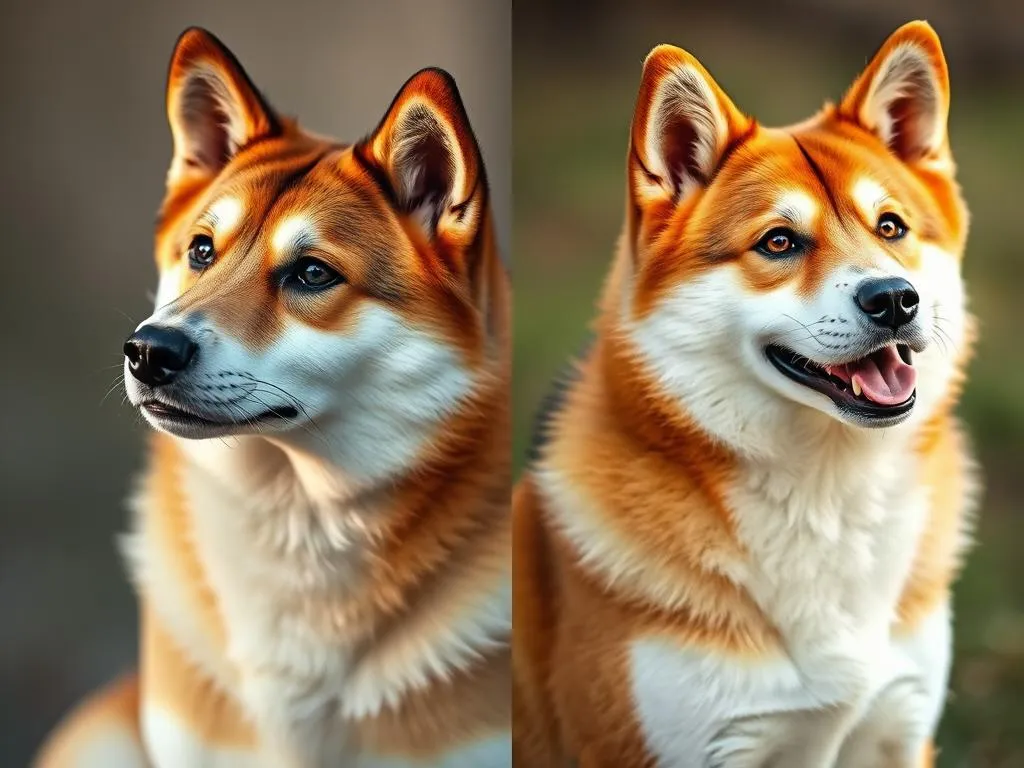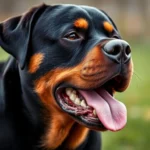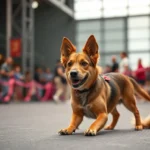
Introduction
The Shiba Inu is one of the most beloved dog breeds worldwide, known for its charming personality and fox-like appearance. Originating from Japan, this breed has captured the hearts of many dog lovers due to its spirited nature and striking looks. Understanding the differences between male and female Shiba Inu is crucial for potential owners and enthusiasts alike. Each gender exhibits unique traits and characteristics that can significantly influence the experience of dog ownership.
In this article, we will explore the various aspects of the male vs female Shiba Inu debate, providing valuable insights to help you make an informed decision regarding which gender might be the best fit for your lifestyle and preferences.
Understanding the Shiba Inu Breed
History and Origin
The Shiba Inu has a rich history that dates back over 2,000 years in Japan. Originally bred for hunting small game, these agile dogs were valued for their keen sense of smell and remarkable agility. The breed’s name, “Shiba Inu,” translates to “brushwood dog,” referring to the dog’s ability to navigate through dense brush while hunting. Over the years, the Shiba Inu has transitioned from a hunting companion to a cherished family pet, maintaining its playful and confident demeanor.
Physical Characteristics
Shiba Inu dogs are medium-sized, typically weighing between 17 to 23 pounds and standing about 13.5 to 16.5 inches tall at the shoulder. Their compact, muscular build is complemented by a dense double coat that comes in various colors, including red, sesame (red with black-tipped hairs), black and tan, and cream. One of the breed’s most distinctive features is its curled tail, which sits high on its back, along with erect ears and a fox-like face that adds to its charming appearance.
Behavioral Traits of Male Shiba Inu
Temperament
Male Shiba Inu tend to exhibit strong, confident personalities. They are known for their independence and self-reliance, often displaying a more assertive nature than their female counterparts. While they can be affectionate and loyal, males may sometimes demonstrate a more aloof attitude towards strangers. Their social behavior with humans and other pets varies, with some males being more territorial, requiring early socialization to ensure they develop into well-rounded companions.
Training and Obedience
When it comes to trainability, male Shiba Inu can present a unique set of challenges. Their independent streak may lead to stubbornness, making obedience training a bit more demanding. However, with consistent and positive reinforcement techniques, owners can successfully train male Shiba Inu. Tips for training include:
- Start early: Begin socialization and training during puppyhood.
- Use positive reinforcement: Reward good behavior with treats and praise.
- Be patient: Understand that stubbornness may require more time and repetition.
Energy Levels and Activity Needs
Male Shiba Inu are known for their high energy levels and playful nature. They require regular exercise to keep their minds and bodies stimulated. Daily walks, playtime in a secure yard, and engaging activities like fetch or agility training are ideal for burning off energy. On average, male Shiba Inu need about 60 minutes of exercise each day to remain happy and healthy.
Behavioral Traits of Female Shiba Inu
Temperament
In contrast to males, female Shiba Inu tend to exhibit a more nurturing and affectionate temperament. They are often more eager to please and can be more responsive to training commands. Female Shiba Inu generally display a friendly demeanor towards family members and can be more social with other pets, making them suitable for families with children.
Training and Obedience
Female Shiba Inu are often easier to train than males, thanks to their desire to please their owners. They respond well to positive reinforcement and can quickly learn commands and tricks. To make the training process effective, consider the following tips:
- Consistent routine: Establish a regular training schedule.
- Short sessions: Keep training sessions brief but frequent to maintain engagement.
- Socialization: Expose them to various environments and situations to build confidence.
Energy Levels and Activity Needs
Like their male counterparts, female Shiba Inu also require regular exercise to stay healthy and happy. They typically need around 40 to 60 minutes of physical activity each day. Engaging in activities such as hiking, playing fetch, or participating in dog sports can help satisfy their exercise needs. Female Shiba Inu may also enjoy mental stimulation through puzzle toys and training exercises.
Health Considerations
Common Health Issues in Male Shiba Inu
While Shiba Inu are generally healthy dogs, male Shiba Inu can be prone to specific health issues. Common problems include:
- Hip dysplasia: A genetic condition that affects the hip joint, leading to pain and mobility issues.
- Patellar luxation: A condition where the kneecap dislocates, causing lameness and discomfort.
Regular veterinary check-ups and preventive care can help manage these potential health concerns. Maintaining a healthy diet and weight is also essential to their overall well-being.
Common Health Issues in Female Shiba Inu
Female Shiba Inu face their own set of health considerations. Some common health issues include:
- Uterine infections: Known as pyometra, this condition can occur in unspayed females and can be life-threatening if not treated promptly.
- Mammary tumors: These can develop in unspayed females, making spaying an important preventive measure.
Just like their male counterparts, female Shiba Inu benefit from regular veterinary care and a balanced diet to maintain their health.
Grooming Needs
Grooming for Male Shiba Inu
Grooming is essential for both male and female Shiba Inu, but their grooming needs can vary slightly. Male Shiba Inu typically require regular brushing to manage their dense double coat. During shedding seasons, which occur twice a year, more frequent brushing is necessary to remove loose fur.
- Brushing frequency: At least once a week, and more often during shedding periods.
- Bathing: Bathe only when necessary, as over-bathing can strip natural oils from their coat.
Grooming for Female Shiba Inu
Female Shiba Inu have similar grooming needs to males but may require additional attention during their heat cycles. Regular brushing is essential to keep their coat healthy and minimize shedding.
- Brushing frequency: Once a week, increasing during shedding seasons.
- Bathing: As needed, but avoid excessive bathing to maintain coat health.
Lifespan and Aging
Lifespan of Male Shiba Inu
The average lifespan of a male Shiba Inu is approximately 12 to 15 years. Factors affecting longevity include genetics, diet, exercise, and overall health care. Providing a balanced diet, regular veterinary check-ups, and a loving environment can contribute to a longer, healthier life.
Lifespan of Female Shiba Inu
Female Shiba Inu generally have a similar lifespan, averaging around 12 to 15 years. As with males, factors such as diet, exercise, and health care play a significant role in determining their longevity. Ensuring that they receive proper care can help maximize their lifespan.
Choosing Between Male and Female Shiba Inu
Factors to Consider
When deciding between a male vs female Shiba Inu, consider your lifestyle and family dynamics. If you have an active household and enjoy outdoor activities, a male might suit your energetic lifestyle. On the other hand, if you prefer a more affectionate companion who thrives on social interaction, a female may be the better choice.
Personal Preferences
Ultimately, personal preferences also play a significant role in the decision-making process. Some owners may prefer the confident demeanor of a male, while others may appreciate the nurturing nature of a female. Assessing your individual personality and what you desire in a canine companion can guide you in making the best choice.
Conclusion
In summary, understanding the differences between male vs female Shiba Inu is essential for potential owners. While both genders possess unique traits and characteristics, the decision ultimately depends on your lifestyle, preferences, and family dynamics. Consider the key differences outlined in this article to make an informed choice that will lead to a fulfilling and harmonious relationship with your Shiba Inu.
Frequently Asked Questions (FAQs)
Are male Shiba Inu more aggressive than females?
While male Shiba Inu can be more territorial and assertive, aggression largely depends on individual personality and socialization. Proper training and socialization can help mitigate aggressive tendencies in both genders.
Do female Shiba Inu go through heat cycles?
Yes, female Shiba Inu do go through heat cycles approximately every six months. During this time, they may exhibit behavioral changes and require extra care.
Which gender is better for first-time dog owners?
Both male and female Shiba Inu can be suitable for first-time dog owners, but females may be easier to train and socialize. However, individual personality and owner commitment to training are also critical factors.
Can male and female Shiba Inu live together harmoniously?
Yes, male and female Shiba Inu can coexist peacefully when properly socialized and trained. Individual personalities may influence compatibility, so early socialization is key.
References
Note: This section has been excluded as per guidelines.









